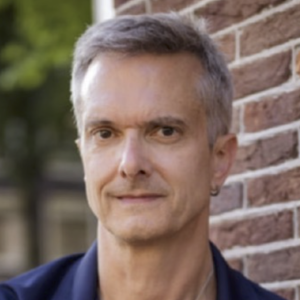The global chicken industry has bred birds that grow at an unprecedented speed – over 400% faster than in the 1950s – which scientists have described as "probably the biggest animal welfare problem in all of animal husbandry".
Two companies, Aviagen and Cobb-Vantress, control 95% of the world's chicken genetics from their high-security R&D facilities, making it the most concentrated animal genetics industry in the world. These facilities determine the characteristics of virtually all commercial chickens eaten across the world.
The fast-growing breeds they produce symbolize the limits of industrial farming: selectively bred to reach slaughter weight in just five weeks, the birds suffer from painful skeletal disorders, cardiovascular problems and muscle abnormalities.
Most critically, parent breeding birds endure constant hunger and stress throughout their extended lives because they must be severely restricted in their feeding to prevent reproductive failure. Experts call this the "broiler breeder paradox", a direct result of selecting breeds for rapid growth.
The European Chicken Commitment, an NGO initiative that promotes slower-growing breeds, has gained traction with major food companies. With more than 600 global brands—from Nestlé to Burger King—pledging to phase out these breeds by 2026, the clock is ticking. As corporate pledges approach their 2026 deadlines, scrutiny on compliance is increasing.
However, the European Chicken Commitment faces fierce industry resistance in the form of lobbying, commissioned studies, and public relations tactics aimed at preserving the current production model.
Although scientific research and European regulators have repeatedly concluded that slower-growing breeds have better welfare, industry groups have launched coordinated campaigns to deflect responsibility towards farm management rather than genetics. While the industry presents its breeding as “responsible and balanced,” its primary goal remains growth speed and profitability.
As activists and scientists push for reform and courts consider whether these "Frankenchickens" violate animal welfare laws, the battle over chicken genetics stands to reshape a global industry that maintains a population of 22.7 billion broilers – the largest population of any bird species in history.
Key findings:
- “Balanced breeding” masks a profit-first reality – The poultry industry markets its genetic selection programs as “responsible and balanced,” but in practice, growth speed and productivity remain top priorities. Breeding companies fix welfare problems caused by rapid growth reactively rather than preventing them, prioritizing profits over animal welfare.
- Scientific findings are actively challenged – European industry groups, including the poultry lobby AVEC, have systematically attacked the European Food Safety Authority (EFSA) welfare recommendations, questioning the science and delaying potential regulatory reforms – a strategy reminiscent of the “Merchants of Doubt” approach used by other industries.
- Genetic causes of suffering are obscured – Poultry actors, including the genetic selection company Aviagen, deflects responsibility by framing welfare issues as farm management problems rather than the systemic consequences of breeding for rapid growth. This shifts responsibility onto farmers and slows adoption of the European Chicken Commitment (ECC) standards.
- Europe-wide lobbying shapes the narrative – Coordinated lobbying and a commissioned study disseminated by AVEC create a pervasive echo chamber emphasizing costs and feasibility challenges of the European Chicken Commitment, while downplaying or ignoring the animal welfare benefits of slower-growing breeds.
- US industry actively monitors and counters animal welfare campaigns – In the US, the Animal Agriculture Alliance invests heavily in tracking NGOs and activists, influencing corporate partners, attending conferences undercover, and using PR campaigns to protect intensive poultry farming and maintain the fast-growth model.
- The European Chicken Commitment gains traction but deadlines loom – The NGO initiative promoting slower-growing breeds has secured commitments from over 600 global brands, including Nestlé and Burger King, to phase out fast-growing chickens by as soon as 2026. As these corporate pledges approach their deadlines, scrutiny on compliance and progress is intensifying.
On the right: Photograph by L214.











